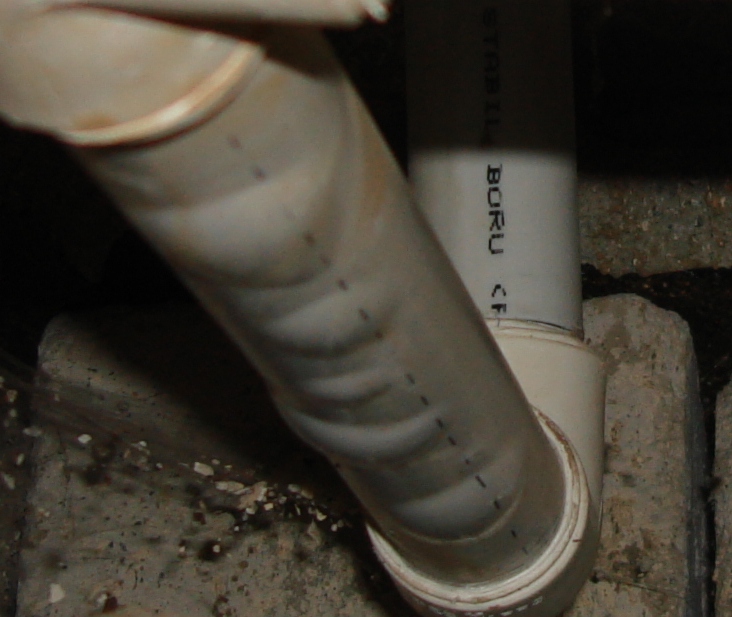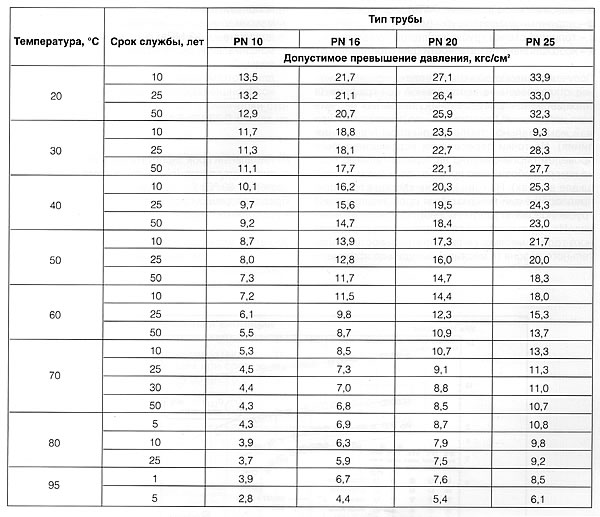Polypropylene pipes for heating
If not so long ago polypropylene pipes for heating were considered something exotic, today such pipes are quite widespread, and the reviews about them are positive. Such material surpasses other similar materials in almost all its indicators. The main question that interests us is whether polypropylene pipes for heating can be used for heating systems.
Polypropylene pipes for heating
Features of this material
Is it effective to use polypropylene pipes in heating? If we take such a characteristic as density, then for polypropylene it is only 0.91 kg / cm 2. However, this material has good abrasion resistance and is quite hard. You do not have to worry that the abrasive particles present in the coolant will quickly wear out propylene pipes for heating.
The advantages of this material also include the following:
- High resistance to various aggressive substances. The destruction of the surface of a pipe for heating from polypropylene can only be provoked by prolonged heating or exposure to concentrated acid on the material. Polypropylene is also not afraid of pieces of slag and sand that are contained in water.
- The mechanical strength of polypropylene pipes will depend on the speed with which the force was applied. If the pipe is bent sharply, then most likely it will simply break. You can apply the same effort, but in a gradual way, and then the pipe will simply bend. Since the operational loads will be directly related to linear expansion during heating, such loads will also be applied to the material in a slow manner.
- Polypropylene has good frost resistance. PP pipes for heating can withstand temperatures up to -15 degrees. However, when the heating system is operating, the temperature should drop to at least 0 degrees, and during normal operation it should coincide with the temperature of the coolant.
- The material is able to withstand high temperatures. It will begin to melt at 160-170 degrees, and at 140 degrees it will only begin to soften.
Polypropylene is a material whose coefficient of thermal expansion is quite high. However, this is already a disadvantage of such a system as floor heating with plastic pipes.
Reinforcement
Pipe reinforcement is the simplest solution to such a problem as thermal expansion. A material with a slightly lower thermal expansion coefficient will act as a stabilizer and, as a result, thermal expansion can decrease by a factor of five.
There are two main methods for reinforcing pipes (examples in the photo):
- With aluminum foil. The aluminum reinforced pipe is a sandwich of three glued layers, between which there is an aluminum layer. This layer is very thin. It is very important to pay attention to the quality of such pipes. And if you break the technology, they will quickly begin to exfoliate.
- PPR pipes for heating, reinforced with fiberglass. Such pipes are of a monolithic type. The fiber layer is located directly in the thickness of the polypropylene pipe. Such pipes are good because they will not exfoliate. Also, if you use a welded joint, then it will not be necessary to strip the reinforcing layer.
On the video you can see how the reinforcement is carried out. Both types of reinforcement are suitable for heating systems. However, it must be remembered that reinforcement will only reduce the thermal expansion of polypropylene, and will not completely relieve it of this property.
Heat carrier temperature
Surely everyone knows that the temperature in the heating system rarely corresponds to the one indicated in the regulatory documents. There are several main factors that affect the interaction between the temperature of the coolant and pipes:
- Many manufacturers guarantee that heating from polypropylene pipes can withstand coolant temperatures up to 95 degrees.
- In our country, such a coolant temperature can only be seen in severe frosts. However, if the temperature in the heating system reaches 95 degrees, then in the heating pipeline it can reach 140 degrees.
Sometimes, for reasons such as severe frosts, violation of the temperature schedule, or for other reasons, the nozzle that regulates the temperature of the coolant in the system is pulled out of the elevator assembly, and the suction is muffled. In this case, the water that comes from the heating main goes directly to the heating radiators and risers. It enters the system at a temperature that is not only dangerous for polypropylene, but destructive.

Criteria for choosing polypropylene pipes
So, what should you pay attention to when choosing polypropylene pipes?
- Pressure
The marking of polypropylene pipes for heating type PN ** will be directly related to the working pressure. The two numbers that follow after the letters will tell you what maximum working pressure the product is designed for. The working pressure is indicated for a coolant temperature of 20 degrees. If in your system the temperature of the coolant is 80-90 degrees, then you can divide the value by three. The most popular pipes are marked PN20.

- Temperature
The marking of the pipe will also tell us what maximum temperature polypropylene heating can withstand. For reinforced pipes, almost all manufacturers indicate a temperature of 90 to 95 degrees.
- Diameter
In order to calculate the desired diameter, builders use very complex formulas. Moreover, factors such as heat load, the roughness coefficient of the material from which polypropylene heating is made, and the temperature difference between supply and return are taken into account.
On the practical side, you need to remember at least two simple rules:
- In the apartment, during the distribution of heating, the polypropylene pipes that we use should not underestimate the clearance relative to such an element as a heating riser made of polypropylene pipes. In new buildings, risers from a pipe such as DU20 are most often used. This means that heating of a private house will be required with polypropylene pipes with an outer diameter of 2.6 cm. In stalins, where the risers are inch, it is better to use pipes with an outer diameter of 3.2 cm.
- In a private house, the total area of which exceeds 250 square meters. meters, the most efficient heating system would be Leningradka. The ring will require a pipe with a diameter of 32-40mm. For tie-in radiators, pipes with a diameter of 20-26mm are required.
